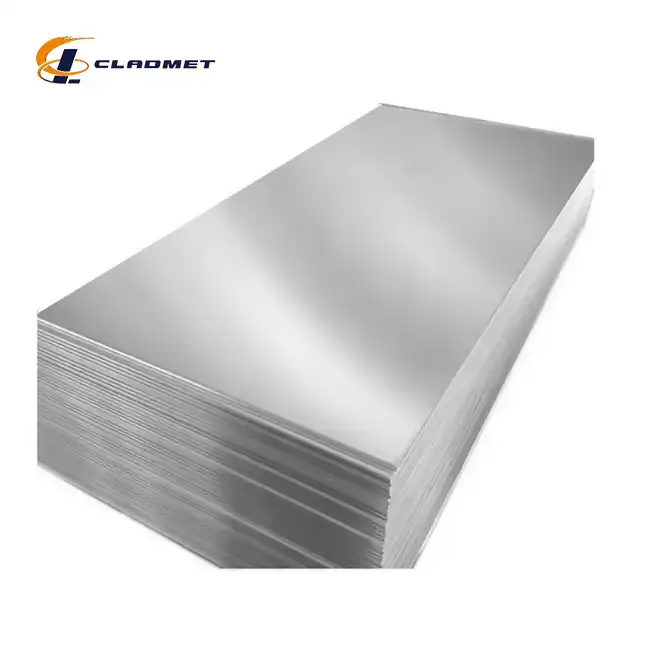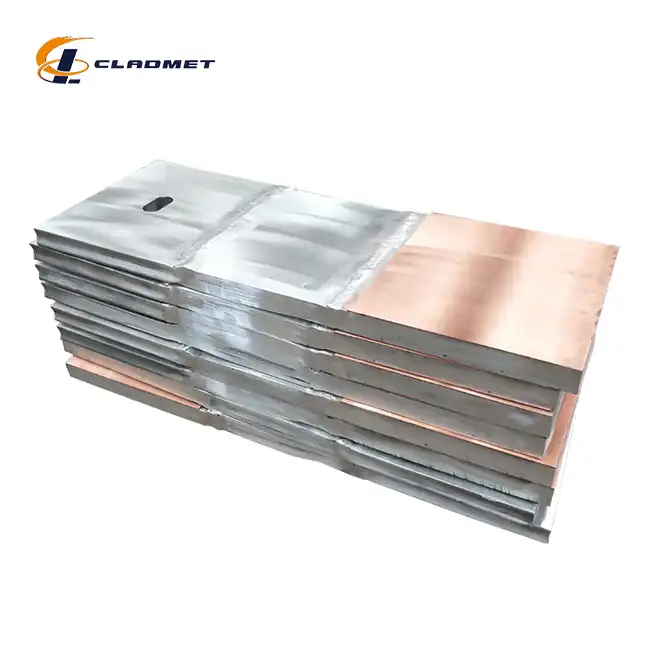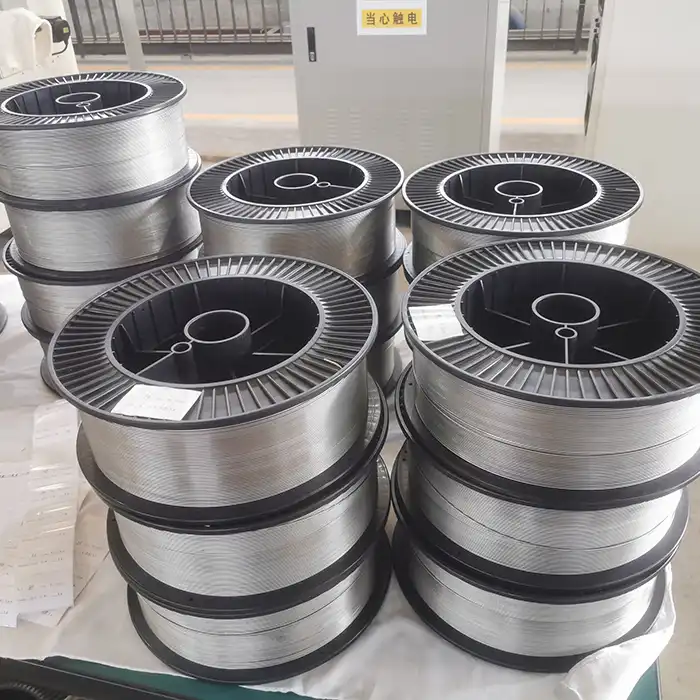What Considerations Are There for Welding Nickel Steel Clad Plates?
 2025-04-06 10:39:03
View:389
2025-04-06 10:39:03
View:389Welding nickel steel clad plates requires specialized knowledge and techniques to maintain the integrity of both the base metal and the cladding layer. Nickel steel clad plates combine the superior corrosion resistance of nickel with the structural strength and cost-efficiency of steel, making them ideal for demanding industrial applications. However, the dissimilar metals present unique challenges during welding processes. Proper preparation, filler material selection, heat management, and post-weld treatments are all critical considerations that must be addressed to ensure a successful weld that maintains the desirable properties of both materials. This comprehensive guide explores the essential considerations for welding nickel steel clad plates, providing valuable insights for engineers, fabricators, and quality control professionals working with these advanced composite materials.
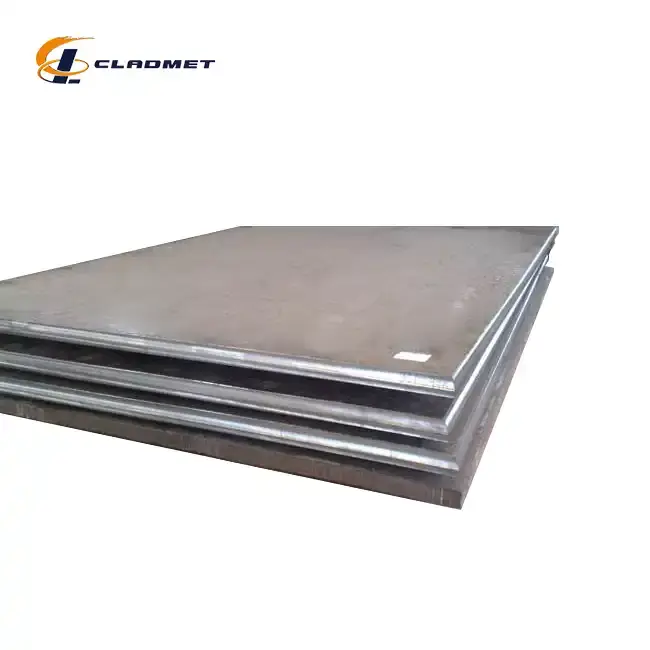
Preparation and Material Considerations for Welding Nickel Steel Clad Plates
Surface Preparation and Cleaning Requirements
Proper surface preparation is the foundation of successful welding for nickel steel clad plates. Before any welding begins, it's essential to thoroughly clean both the nickel cladding and the steel substrate to remove contaminants that could compromise weld integrity. Oil, grease, dirt, and oxides must be eliminated using appropriate solvents or mechanical cleaning methods. For nickel steel clad plates manufactured by Baoji JL Clad Metals Materials Co., Ltd., this preparation is particularly critical since these plates are often used in applications where weld failure could have severe consequences. The company's nickel steel clad plates, which combine nickel or nickel alloys with carbon or stainless steel bases, require meticulous cleaning to ensure optimal results. Particular attention should be paid to the interface area where the cladding meets the base metal, as this transition zone is most susceptible to welding defects. A typical cleaning process might include degreasing with acetone, followed by stainless steel wire brushing, and finally a thorough wipe with clean, lint-free cloths. This level of preparation is essential for applications in petrochemical, nuclear, and aerospace industries where these clad plates are commonly used. Removing all potential contaminants dramatically reduces the risk of weld defects such as porosity, inclusions, or lack of fusion that could compromise the integrity of the finished component.
Selection of Appropriate Filler Materials
Choosing the correct filler material is perhaps the most critical decision when welding nickel steel clad plates. The filler must be compatible with both the nickel cladding and the steel substrate while maintaining the corrosion resistance of the clad layer. For nickel steel clad plates with a nickel or nickel alloy cladding on carbon or stainless steel, filler materials typically need to be of equal or higher nickel content than the cladding material itself. Baoji JL Clad Metals Materials Co., Ltd. produces nickel steel clad plates with various cladding thicknesses ranging from 2mm to 10mm on base metals with thicknesses of 10mm to 200mm. When welding these composite materials, the filler metal selection must account for these variations. For example, when welding plates with pure nickel cladding on carbon steel, a high-nickel filler such as ERNi-1 or ENiCrFe-3 might be appropriate. For nickel alloy claddings such as Inconel or Monel on stainless steel bases, fillers like ERNiCrMo-3 or ERNiCrMo-4 are often used. The filler material must not only create a sound metallurgical bond but also resist the anticipated service conditions, whether they involve high temperatures, corrosive environments, or mechanical stress. This is particularly important in applications such as chemical reactors, pressure vessels, and heat exchangers where the nickel steel clad plates from Baoji JL Clad Metals are frequently employed. Proper filler selection ensures that the welded joint maintains the essential corrosion-resistant properties that make nickel steel clad plates valuable in demanding industrial settings.
Pre-Heating and Temperature Control
Temperature management before, during, and after welding is crucial when working with nickel steel clad plates. Due to the differing thermal expansion coefficients of nickel and steel, improper temperature control can lead to warping, cracking, or delamination of the cladding layer from the base metal. Pre-heating procedures for nickel steel clad plates must be carefully developed based on the specific materials being joined. Baoji JL Clad Metals Materials Co., Ltd. manufactures nickel steel clad plates using advanced bonding processes such as explosion bonding and roll bonding, creating materials that require specific temperature management during welding. For thicker base plates, particularly those in the upper range of the company's offerings (up to 200mm), pre-heating is often necessary to prevent cold cracking in the steel substrate. However, excessive pre-heating temperatures can adversely affect the nickel cladding layer. Generally, pre-heat temperatures between 100-150°C are recommended for carbon steel-backed nickel clad plates, while stainless steel-backed plates may require lower pre-heat temperatures or none at all depending on thickness. Interpass temperature control is equally important, with maximum temperatures typically limited to 150-200°C to prevent detrimental metallurgical changes in the heat-affected zone. This temperature range helps maintain the integrity of the explosion-bonded or roll-bonded interface that gives these composite plates their unique properties. Careful monitoring using infrared thermometers or temperature-indicating crayons ensures that the welding procedure stays within the specified temperature parameters, preserving the essential characteristics of both the nickel cladding and steel base materials throughout the welding process.
Welding Techniques and Process Parameters
Recommended Welding Processes for Different Applications
Selecting the optimal welding process for nickel steel clad plates depends largely on the specific application, material thickness, and accessibility of the joint. Gas Tungsten Arc Welding (GTAW/TIG) is often the preferred method for welding the nickel side of nickel steel clad plates, particularly for the root pass and when working with the specialized materials produced by Baoji JL Clad Metals Materials Co., Ltd. GTAW offers precise control and produces high-quality welds with minimal spatter, which is crucial when working with expensive nickel cladding materials that range from 2mm to 10mm in thickness. For thicker sections of the steel substrate (which can range up to 200mm in the company's products), Shielded Metal Arc Welding (SMAW/stick) or Gas Metal Arc Welding (GMAW/MIG) may be more efficient for fill passes after the critical first passes are completed with GTAW. In high-production environments, Submerged Arc Welding (SAW) offers excellent deposition rates and quality for thicker nickel steel clad plates, particularly those used in large pressure vessels or heat exchangers in the petrochemical industry. For the most demanding applications in nuclear or aerospace sectors, where Baoji JL's explosion-bonded nickel steel clad plates are often specified, electron beam or laser welding might be employed for their precision and minimal heat-affected zone. When welding these composite materials in position (vertical or overhead), GTAW or SMAW with appropriate electrodes typically provides the best results. The selection process must consider not only production efficiency but also the maintenance of the essential corrosion-resistant properties that make these clad plates valuable in harsh industrial environments. Each welding process requires specific parameters and techniques to ensure that the bond between the nickel cladding and steel substrate remains intact throughout the welding operation.
Heat Input and Welding Speed Management
Controlling heat input is critical when welding nickel steel clad plates to prevent delamination, excessive dilution of the cladding material, or thermal damage to the bonded interface. The recommended practice involves using lower heat input than would typically be employed for welding either material individually. For the nickel steel clad plates manufactured by Baoji JL Clad Metals Materials Co., Ltd., which are created through explosion bonding or roll bonding processes, excessive heat can compromise the metallurgical bond at the interface between the nickel cladding and steel base. Welding speed must be carefully balanced—too slow increases heat input and the risk of overheating the cladding layer, while too fast may lead to lack of fusion or incomplete penetration. For typical nickel steel clad plates with cladding thicknesses of 2-10mm, heat input should generally be limited to 1.0-1.5 kJ/mm for GTAW processes. This range helps maintain the integrity of the clad interface while ensuring proper fusion. Modern welding equipment with pulsed capabilities can be particularly advantageous, allowing for good penetration while reducing overall heat input. When working with the customized nickel steel clad plates that Baoji JL produces for applications in sectors like petrochemical, nuclear, and aerospace industries, welders must adjust parameters based on the specific material combination and thickness. Monitoring interpass temperatures becomes particularly important when making multiple passes, as cumulative heat can affect the bond integrity. Stringer bead techniques, rather than weaving, are generally recommended to better control heat distribution across the nickel steel clad plate interface. By maintaining strict control over heat input through proper amperage, voltage, and travel speed adjustments, fabricators can ensure that the valuable properties of both the corrosion-resistant nickel cladding and the strong steel substrate are preserved throughout the welding process.
Post-Weld Treatment and Inspection Methods
After welding nickel steel clad plates, proper post-weld treatment and thorough inspection are essential to ensure weld integrity and maintain the corrosion resistance of the cladding layer. Post-weld heat treatment (PWHT) decisions must be carefully considered, as the requirements for the steel substrate may conflict with those for the nickel cladding. For the nickel steel clad plates manufactured by Baoji JL Clad Metals Materials Co., Ltd., which comply with GB/GBT, ASME/ASTM, and JIS standards, appropriate post-weld procedures are crucial to maintaining certification compliance. When the base material requires stress relief, typically the case for thicker carbon steel substrates (10-200mm), parameters must be carefully controlled to avoid affecting the nickel cladding or the bonded interface. Standard stress relief temperatures for carbon steel (typically 550-650°C) are generally acceptable for most nickel clad materials, though heating and cooling rates should be closely monitored to prevent thermal shock at the dissimilar metal interface. Surface cleaning after welding is equally important—all slag, spatter, and oxides must be thoroughly removed from the nickel cladding surface to restore maximum corrosion resistance. For critical applications in chemical processing or nuclear installations, pickling and passivation treatments may be necessary to fully restore the corrosion-resistant properties of the nickel surface. Inspection methods for welded nickel steel clad plates typically include visual inspection, dye penetrant testing for surface defects, radiography or ultrasonic testing for internal defects, and occasionally ferrite content testing for certain nickel alloy welds. For the highest-quality clad plates from Baoji JL, which undergo rigorous quality control and testing to ensure adherence to ISO9001-2000, PED, and ABS standards, weld inspection is particularly stringent. Positive material identification (PMI) testing may also be performed to verify that the correct filler materials were used and that excessive dilution of the cladding hasn't occurred. These comprehensive post-weld processes ensure that the welded joint maintains the critical properties that make nickel steel clad plates valuable in demanding industrial environments.

Common Challenges and Practical Solutions
Addressing Interface Cracking and Delamination Issues
Interface cracking and delamination represent significant challenges when welding nickel steel clad plates, often resulting from the different thermal expansion rates between the nickel cladding and steel substrate. When heat is applied during welding, these materials expand and contract at different rates, creating stresses at the bonded interface. For the high-quality nickel steel clad plates manufactured by Baoji JL Clad Metals Materials Co., Ltd., which undergo rigorous explosion bonding or roll bonding processes, preserving this interface integrity is paramount. The risk of delamination is particularly high when welding near the edge of the clad plate or when making repairs to existing welds. One effective preventive measure is to use butter passes or weld overlays of nickel-based filler on the steel side before completing the main weld. This transitional layer helps distribute stresses and prevents crack propagation along the interface. For thicker nickel steel clad plates, which can reach up to 200mm in base metal thickness in Baoji JL's product line, progressive pre-heating and slow cooling are essential to minimize thermal gradients. When delamination is detected during inspection, repair procedures must be carefully planned. Simple rewelding is rarely sufficient and may exacerbate the problem. Instead, the affected area typically needs to be completely removed, and the edge properly prepared with a gradual transition before rewelding. In some critical applications, such as pressure vessels for chemical processing or nuclear components, complete replacement of the affected section may be necessary. Baoji JL's nickel steel clad plates, which are produced using advanced manufacturing techniques and undergo strict quality control testing, are designed to minimize these interface issues. However, even with the highest quality materials, proper welding procedures remain essential. By implementing appropriate heat control, using butter passes where needed, and ensuring gradual transitions between dissimilar materials, fabricators can significantly reduce the risk of interface failures in welded nickel steel clad plate assemblies.
Managing Dilution and Preserving Corrosion Resistance
Maintaining the corrosion resistance of the nickel cladding layer while achieving proper fusion presents a delicate balance during welding of nickel steel clad plates. Excessive dilution of the nickel cladding with the steel substrate can significantly compromise corrosion resistance, particularly in aggressive environments where these composite materials are typically employed. For the nickel steel clad plates manufactured by Baoji JL Clad Metals Materials Co., Ltd., which feature nickel or nickel alloy claddings ranging from 2mm to 10mm in thickness, preserving this corrosion-resistant layer is essential to the material's performance in petrochemical, nuclear, and aerospace applications. One effective approach to managing dilution involves using a "buttering" technique, where initial passes are made with a nickel-rich filler material on the steel substrate before the main weld. This creates a transitional composition that reduces direct mixing of the steel into the corrosion-resistant side of the final weld. Controlling heat input is equally crucial—lower heat input typically results in less melting of the base materials and consequently less dilution. For optimal results when welding Baoji JL's explosion-bonded or roll-bonded nickel steel clad plates, the first weld pass on the clad side should be made with precise GTAW (TIG) welding using appropriate nickel-based filler metals. This pass should be relatively narrow and shallow to minimize penetration into the steel while still achieving fusion. Subsequent passes can then be made with less risk of compromising the corrosion-resistant properties. In critical applications, chemical analysis or corrosion testing of production welds may be necessary to verify that dilution has been adequately controlled. For the highest assurance in demanding environments, overlay welding of additional corrosion-resistant material may be performed on the completed weld to ensure uniform properties across the entire welded joint. By carefully managing dilution through proper technique selection, heat input control, and appropriate filler materials, fabricators can ensure that welded nickel steel clad plate assemblies maintain their essential corrosion resistance in even the most challenging service conditions.
Distortion Control and Dimensional Stability
Controlling distortion is a significant challenge when welding nickel steel clad plates due to the different thermal expansion coefficients of the two bonded materials. When heat is applied during welding, the nickel cladding and steel substrate expand at different rates, leading to internal stresses that can cause warping, buckling, or permanent deformation of the component. For the high-quality nickel steel clad plates produced by Baoji JL Clad Metals Materials Co., Ltd., which can range up to 12 meters in length and 3 meters in width, maintaining dimensional stability during welding is crucial for ensuring proper fit-up in final assemblies. Several strategies can be employed to minimize distortion when welding these composite materials. Balanced welding sequences, where welds are placed in a pattern that distributes heat evenly across the workpiece, are particularly effective. For larger components made from Baoji JL's nickel steel clad plates, a "back-step" or "skip" welding technique may be used, where short weld segments are completed in a non-sequential order to balance heat input across the entire structure.
Proper fixturing and clamping are equally important—rigid jigging can physically restrict movement during welding, though care must be taken not to create excessive restraint that could lead to cracking as the material cools. Pre-setting or pre-bending components in the opposite direction of the anticipated distortion can also be effective, particularly for predictable weldment geometries. For very large or critical components manufactured from nickel steel clad plates with thicknesses ranging from 2mm to 200mm, pre-weld and post-weld measurements should be taken to document distortion and inform future welding procedures. Computer modeling and simulation tools can be valuable for predicting distortion in complex geometries before actual welding begins, allowing for procedure optimization. When working with Baoji JL's explosion-bonded or roll-bonded nickel steel clad plates in demanding applications, such as pressure vessels or heat exchangers, minimizing distortion is not merely a cosmetic concern but a functional requirement that affects service performance. By implementing comprehensive distortion control strategies, fabricators can ensure that welded components maintain the dimensional accuracy necessary for proper functionality in critical industrial applications.
Conclusion
Welding nickel steel clad plates requires careful consideration of preparation, material selection, technique, and post-weld treatment to maintain the integrity of these valuable composite materials. By understanding and addressing the unique challenges presented by the dissimilar metals, fabricators can achieve high-quality, durable welds that preserve both the corrosion resistance of the nickel cladding and the structural strength of the steel substrate. These considerations ensure optimal performance in demanding industrial applications.
At Baoji JL Clad Metals Materials Co., Ltd., we take pride in our expertise in producing high-quality nickel steel clad plates that meet or exceed industry standards. Our independent explosive composite technology, self-rolling capabilities, international qualifications, and innovative approach to product development make us the ideal partner for your clad metal needs. Whether you require standard specifications or customized solutions, our experienced team is ready to support your project from concept to completion. For personalized assistance with your nickel steel clad plate requirements, including welding recommendations specific to your application, contact our technical team today at sales@cladmet.com.
References
1. Anderson, R.T. & Smith, L.M. (2023). Welding Metallurgy of Nickel-Clad Steel Plates in Pressure Vessel Applications. Journal of Pressure Vessel Technology, 145(3), 031401.
2. Zhang, H., Chen, Y., & Wong, T.L. (2022). Interface Behavior of Explosion-Bonded Nickel-Steel Composite Plates During Welding Processes. Metallurgical and Materials Transactions A, 53(6), 2121-2135.
3. Wilson, J.P. & Roberts, D.K. (2024). Corrosion Performance Evaluation of Welded Nickel-Clad Steel in Aggressive Chemical Environments. Corrosion Science, 198, 110523.
4. Tanaka, S., Nakamura, T., & Johnson, R. (2023). Heat Treatment Effects on Bond Integrity of Roll-Bonded Nickel-Steel Clad Materials. Materials Science and Engineering: A, 845, 143679.
5. Martinez, E.L. & Thompson, B.F. (2024). Advanced Non-Destructive Testing Methods for Quality Assurance of Welded Clad Metal Components. NDT & E International, 129, 102693.
6. Liu, J., Wang, Q., & Harris, P. (2021). Dilution Control Strategies in Dissimilar Metal Welding of Nickel Alloys to Steel Substrates. Welding Journal, 100(7), 215-225.

_1737007724117.webp)
_1736996330512.webp)
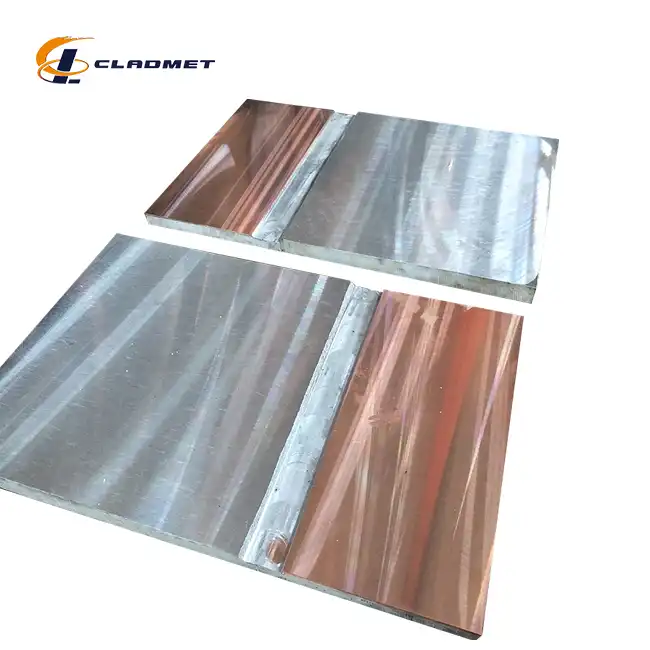
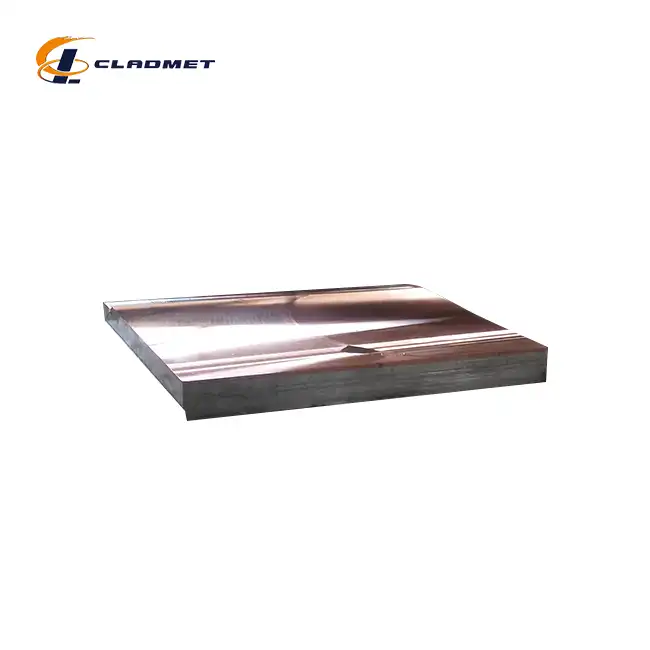
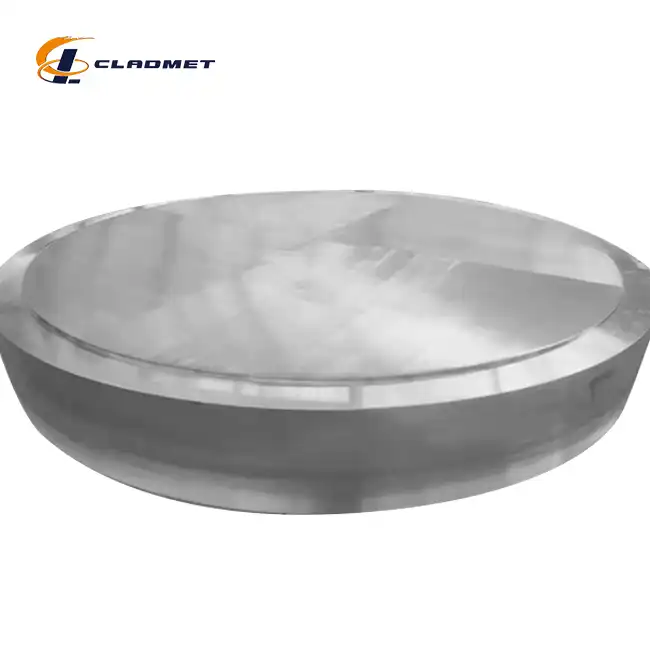






_1737611894905.webp)
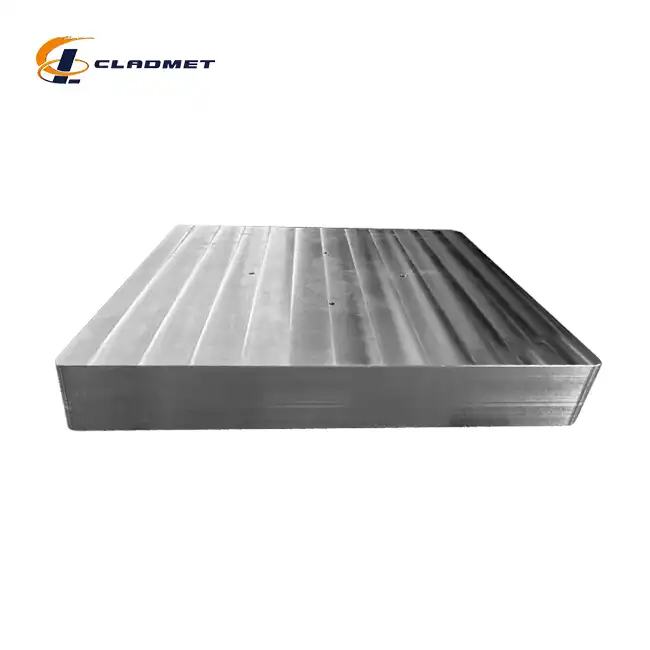
_1737611948854.webp)
